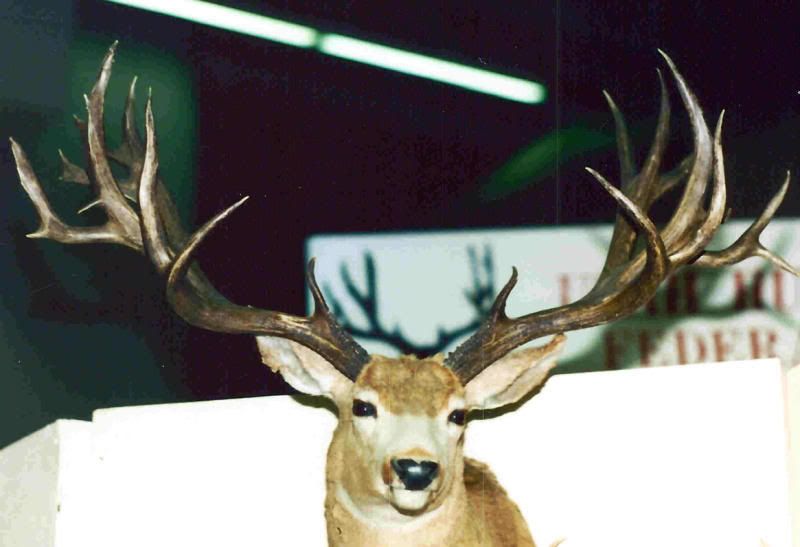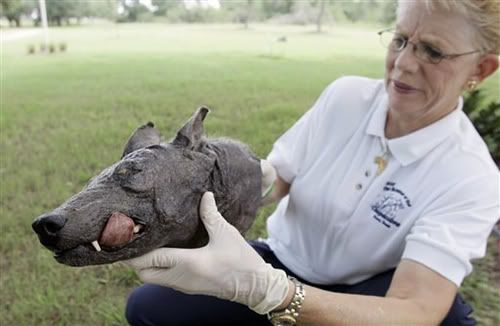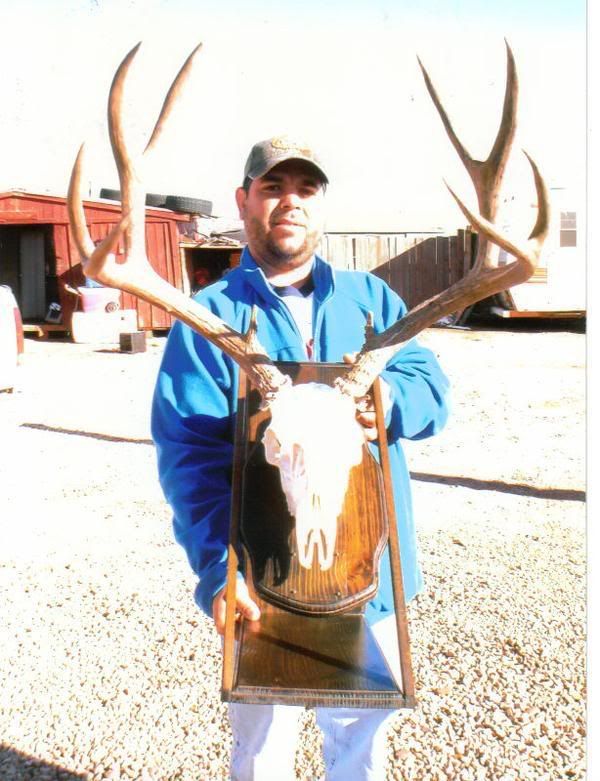Wallowa County holds one of the largest concentrations of cougars in the state – and they’re becoming bolder, say residents and woods workers.
Logging contractor Mike Frolander now sees cougars in broad daylight on a regular basis.
“Up until the 1994 law (banning the use of dogs to hunt cougar), normally you didn’t see cats during the day,” he said. “Now you’ll see them quite frequently.”
The problem with that, Frolander added, is that it demonstrates not only an increased population, but also the animals’ loss of fear of humans.
“Used to be they knew we were the top of the food chain because we could sic the dog on them,” he said. “Now these younger cats think they’re the top of the food chain.”
Frolander brings up a number of issues that the Oregon Department of Fish and Wildlife (ODFW) is struggling with as it implements its 2006 Cougar Management Plan: potential cougar/human conflict, potential cougar/livestock conflict, lower than desired populations of elk and deer, and inability to control the cougar population through general hunting.
The underlying cause of all of the problems is that the cougars have made an amazing comeback.
“Cougars are a great conservation success story,” said Michelle Dennehy, Wildlife Communications Director for ODFW. “However, naturally when you have higher populations, you get higher (cougar/human) conflict. What we plan to do is to target areas of the state where we see high conflict.”
“Targeting areas” is code for deciding where to kill cougars beyond those taken through sport-hunting or damage complaints. How the ODFW intends to do the killing is controversial in some quarters.
 Despite the ban on sport hunting with dogs, houndsmen have proved to be the best tool for taking “problem cats,” and are regularly used by the US Department of Agriculture’s Wildlife Services, which handles many cougar damage complaints in Wallowa County.
Despite the ban on sport hunting with dogs, houndsmen have proved to be the best tool for taking “problem cats,” and are regularly used by the US Department of Agriculture’s Wildlife Services, which handles many cougar damage complaints in Wallowa County.
Last year, the Oregon State Legislature passed House bill 2971 which clarified ODFW’s ability to designate houndsmen as agents to pursue cougars and bears with dogs when acting in official capacity.
A second area of controversy ODFW is wrestling with is the sheer number of cougars they believe may now reside in Oregon.
The target number for cougars, as outlined in the ODFW 2006 Cougar Management Plan, is a minimum of 3,000 cougars statewide. Recent biologist estimates now number cougars at somewhere over 6,000. This does not mean that the ODFW wishes to get down to the minimum number, Dennehy said. In fact, their initial plan was a small reduction of cougars in high-conflict areas, with the intent to study the outcome of that action.
“The cougar plan allows us to proactively manage conflict in areas where there are high levels of conflict, provided the statewide population is 3,000 or above,” said Dennehy.
“If for some reason the cougar population went below the 3,000 threshold, we would end any sport hunting seasons and ‘administrative removals’ of cougars,” she said, referring to cats ODFW removes independently of sport hunting or damage complaints.
However, wildlife-preservation organizations and the groups Goat Ranchers of Oregon and Ranchers for Rural Responsibility filed suit against the Department of Agriculture’s Wildlife Services, Inc., in District Court in January, opposing the planned elimination. The group’s chief complaint is that Wildlife Services did not sufficiently examine the adverse environmental impacts of their decision as required by the National Environmental Policy Act.
A key point for the suing parties is that new studies have shown that older cats who have caused no problems in high interface areas are “good neighbors” and should be preserved.
“There are a number of studies that indicate that by randomly killing cougars you destroy the fabric of their social system,” said Sally Mackler, Wildlife Chair for Oregon Sierra Club. “If you remove a dominant male, you allow juveniles to come in. Juveniles are the age group most likely to create conflict.”
That’s not the only complaint independent cougar biologists and wildlife groups have about the Cougar Management Plan, however.
“Mostly, the cougar management plan has been widely criticized by cougar biologists,” Mackler asserted. “In a nutshell, I would have to say the main point of their criticism has to do with the population model used to establish the population of cougars in the state and the fact that findings were not reviewed by means of a ‘blind peer review.’ It was a selective peer review.”
Wildlife organizations claim that there are far less cougars in the state than reported by ODFW. They also claim that general hunting has resulted in a much higher kill rate than ODFW predicted.
ODFW reports, in contrast, show that general hunting has not proved successful as a monitoring tool.
Despite extending seasons to year-round in four western Oregon areas, and up to 10 months in Zone E, not enough cougars have been killed to maintain target populations.
In 2007, according to a chart provided by the ODFW, 41,813 cougar tags were sold, but hunters took only 232 cats. An additional 96 were killed due to human safety issues or livestock predation, and another 65 were listed as “other mortality” – road kill, found dead, etc.
Many hunters got their cougar tags as part of the Sportspac combination-hunting license, and they clearly did not intend to hunt cougar.
How and to what extent the cougar population is thinned may still be undecided – but the necessity of the thinning is based on numerous studies, according to ODFW. The results of early computations, made as far back as 2003, show that it would take 121,000 elk and 560,000 deer per year to support 5,000 to 7,000 cougars.
Preliminary information in an ongoing study in Zone E (of which Wallowa County is a part) has shown that elk cow/calf ratios have fallen to 23 calves per 100 cows when they used to be 31-35 calves per 100 cows. According to the study, cougars were responsible for 75 percent of all elk calf deaths in that area.
Another three-year study in NE Oregon also found cougars responsible for 33 percent of all adult mule deer deaths.
Yet one more recent study of wintering mule deer in Hells Canyon showed a 25 percent death rate for adult does from 1999-2000, with cougars accounting for most of those deaths.
Wildlife preservationists dispute those numbers as well.
“It’s a very complex variety of factors that cause herd declines,” said Mackler. “We cannot say, ‘Oh, it’s problem A.’ I don’t think we can say it is one single factor that is causing the decline in elk herds. Herd counts have been going down for at least 40 years, and I dare say there are still spike (a yearling male) and doe/cow hunts in the area.”
Whatever the cause of the decrease in elk and deer herds, cougars are not the only ones affected. Less elk and deer means fewer tags sold to human hunters. Although exact numbers were not available at press-time, Dennehy confirmed that ODFW has reduced the number of elk and deer tags available for eastern Oregon.
And that last issue is the one that most concerns businesses in the small towns of Zone E. Income from hunters has been an important staple of the small towns for devades.
In fact, according to ODFW calculations, hunters provide millions of dollars to Oregon economy each year.
In the Cougar Plan, ODFW estimates that hunters annually spend $8.5 million deer hunting and $14.2 million elk hunting in the Blue Mountain region.
But the solution to improved elk and deer herds is not to kill cougars, says Mackler. Increasing community education on how to live with cats, and increasing elk should be the focus, she said.
“We have common area here,” she said. “We have a common goal to reduce conflict. I don’t think anyone wants to see that conflict happen. I think, rather than looking at numbers, we should be looking at the best way to avoid conflict.”






 Despite the ban on sport hunting with dogs, houndsmen have proved to be the best tool for taking “problem cats,” and are regularly used by the US Department of Agriculture’s Wildlife Services, which handles many cougar damage complaints in Wallowa County.
Despite the ban on sport hunting with dogs, houndsmen have proved to be the best tool for taking “problem cats,” and are regularly used by the US Department of Agriculture’s Wildlife Services, which handles many cougar damage complaints in Wallowa County.
